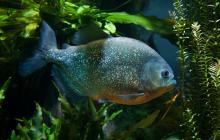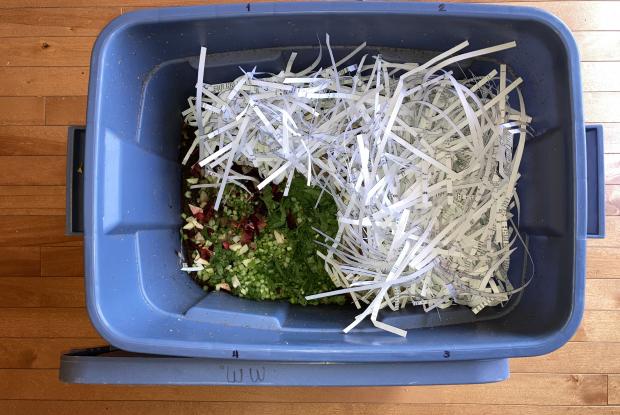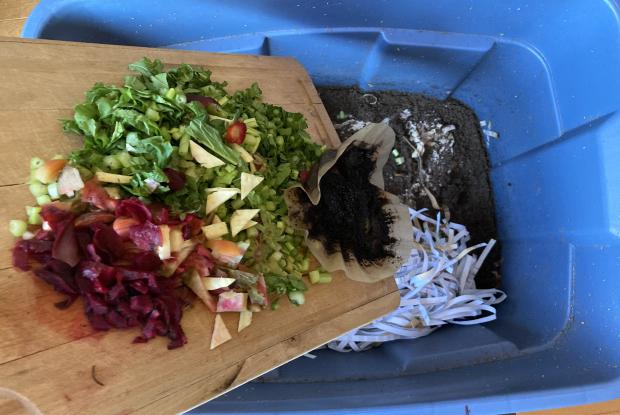Red wrigglers: trouble-free and useful pets!
Did you know that table scraps and yard waste account for about 40% of our garbage? That’s really too bad, because we’re throwing out valuable natural fertilizer that ends up in landfills. Vermicomposting (worm composting) is a simple way to recycle most of this organic material.
What is vermicomposting?
As its name suggests, this composting method relies on worms, more specifically a type of worms known as red wrigglers (Eisenia foetida). Safe inside a covered bin, they transform food scraps and plant waste into high-quality compost. You can vermicompost year round indoors or on a balcony in summer (red wrigglers can’t survive freezing temperatures).
How to make a vermicomposter
Vermicomposting takes little space or equipment:
- A fairly shallow, opaque bin with drainage holes in the bottom. It also needs to have a lid with small air holes.
- A tray under the vermicomposter to collect any liquid.
- A piece of geotextile in the bottom of the bin to stop the bedding and worms from falling through the drainage holes.
- Moist bedding for the worms. It may be shredded newspaper or leaves, mixed with a bit of sand or soil.
- And, of course, some red wrigglers (not the same thing as the earthworms in your garden).
How to feed the worms
Red wrigglers eat their bedding as well as chopped-up kitchen scraps and garden waste. They need to be fed one to three times a week. Avoid adding any meat, fish, bones, dairy products, fats, condiments, diseased, insect-infested or pesticide-treated plants, or weeds that have gone to seed. The scraps should be thoroughly buried under the bedding to avoid attracting fruit flies. It is a good idea to add dried, crushed egg shells regularly to neutralize the acidity of the decomposing scraps.
Is vermicomposting smelly?
No, normally not at all. If foul odours do occur, it points to an imbalance, usually because there is too much food in the vermicomposter or the bedding is too wet.
Can the worms escape from the vermicomposter?
They may climb the inside walls if they are not happy – if the bedding is waterlogged or too acidic, for instance – but they won’t wander outside the bin.
When will the vermicompost be ready?
In about 3 to 6 months. You can harvest it by pushing the entire contents of the bin to one side and adding new bedding to the other side. From then on, bury all scraps only under the fresh bedding, so that the worms will migrate to that side. The vermicompost will be ready to harvest about 3 weeks later.
How to use it?
Vermicompost makes a great soil amendment for houseplants and seedlings. It will also work wonders in your vegetable garden and flower beds. And if you don’t have a garden, it makes a great gift!
Read also
- Appelhof, Mary. Worms Eat my Garbage: How to Set Up and Maintain a Worm Composting System. Second edition. Flower Press, 2003
- Dumas, Maurice. Les vers : des croyances populaires au lombricompostage. Montréal: Berger, 1996.
- Morin, Étienne, Québec, Ministère de l'Environnement, Éco-quartier Peter-Mcgill, Montréal (Ville). Le lombricompostage : une façon écologique de traiter les résidus organiques. Montréal: Québec, Ministère de l'Environnement, 2001.
Red wriggler and vermicomposter suppliers:
-
Ville en vert / Éco-quartier Ahuntsic-Cartierville
10416, rue Lajeunesse
Montréal (Québec) H3L 2E5
Phone: 514 447-6232
[email protected]
www.villeenvert.ca -
Société écocitoyenne de Montréal / Éco-quartier Sainte-Marie
2151, rue Parthenais
Montréal (Québec) H2K 3T3
Phone: 514 523-9220
[email protected]
www.eco-quartiersm.ca -
Éco-quartier Peter-McGill
1240, rue St-Marc
Montréal (Québec) H3H 2E5
Phone: 514 933-1069
[email protected]
www.ecoquartierpetermcgill.org -
Craque-Bitume
www.craquebitume.org -
La ferme Pousse-menu
216, Promenade Ronald
Montréal (Québec) H4X 1M8
Phone: 514 486-2345
[email protected]
www.pousse-menu.com -
La ferme Eugénia
Phone: 418 736-5114
[email protected]
www.incontournable.com/eugenia -
Maison de l'environnement de Verdun
673, 1re avenue
Montréal (Québec) H4G 2V8
Phone: 514 765-8378
[email protected]
www.maisonenvironnementverdun.com
Based on an article by Marie-Josée Bernard in Journal Métro, June 6, 2006.








